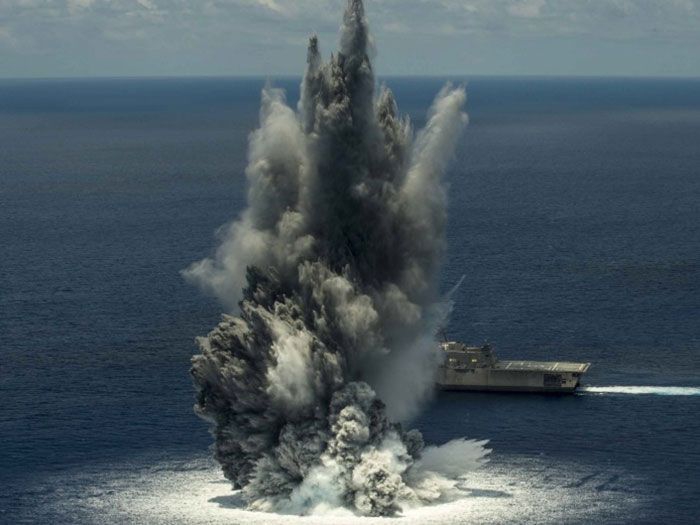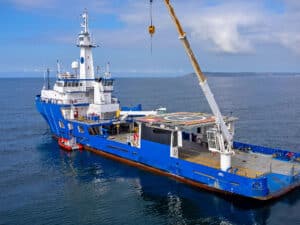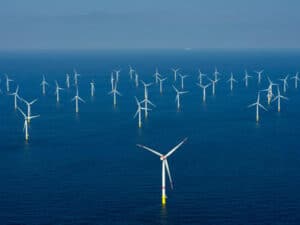
GAO calls for delay in acquiring LCS’s frigate successors
Written by Nick Blenkey
LCS program has survived many attempts to blow it out of the water
APRIL 18, 2017 — There are those who love the Navy’s LCS (littoral combat ship) program, and those that decidedly do not. The ding dong between the LCS lovers and the LCS haters continued today.
The GAO – Government Accountability Office —has now released a report whose title pretty much spells out its message: “Littoral Combat Ship and Frigate: Delaying Planned Frigate Acquisition Would Enable Better Informed Decisions.”
The background to all this, for those who have been dwelling on Mars, is that the last serious attempt by LCS haters to kill off the program resulted in then Secretary of the Navy Ray Mabus saying he would prefer the Navy acquire “something more like a frigate.” That saw the Navy going through a dance that resulted in the current plan to evolve the current LCS designs into beefier versions of what are, essentially, the same two ships under the skin, but that will be called frigates. (It’s not quite that simple, but that’s the essence.)
GAO says that, today, with 28 LCS delivered, under contract, or funded, the Navy plans to wind down the LCS program—with the last contract awards expected in 2017—and pivot to acquisition of the frigate. In 2018, the Navy plans to select one of the two LCS shipbuilders [Lockheed Martin, which builds the Freedom variant at Fincantieri Marinette, and Austal USA, which builds the Independence variant] to construct the frigate, and will ask Congress this year to authorize acquisition plans for 12 frigates and funding for construction of the leadship.
Today’s GAO report finds:
The Navy’s current acquisition approach for its new frigate—a ship based on a Littoral Combat Ship (LCS) design with minor modifications—requires Congress to make significant program decisions and commitments in 2017 without key cost, design, and capability knowledge. In particular, the Navy plans to request authority from Congress in 2017 to pursue what the Navy calls a block buy of 12 planned frigates and funding for the lead ship, which the Navy intends to award in 2018. Approval of these plans would effectively represent the final decision for the entire planned buy of 40 LCS and frigates. According to the Navy’s approved acquisition strategy, the frigates would still require annual appropriations, so Congress would maintain its oversight through its annual appropriation decisions; however, any decision to reduce or delay the program, should that become warranted, could nevertheless be more difficult as the Navy may point to losses in favorable block buy prices, as has been done previously with LCS.
The Navy’s impending request presents a key opportunity for Congress to affect the way forward for the frigate program by ensuring the Navy possesses sufficient knowledge on cost, design, and capability before authorizing an investment of a potential $9 billion for a program that
- has no current formal cost estimate—independent or otherwise,
- will not begin key detail design activities until late fiscal year 2018,
- has significant unknowns in regards to operational performance of the ship upon which its design will be based, and
- based on the existing and planned shipyard workloads, has no industrial base imperative to begin construction in the Navy’s planned time frame.
The Navy’s previous frigate acquisition plans included achieving a higher degree of ship design knowledge before awarding the lead ship in fiscal year 2019, as the plans included significant detail design activities prior to contract award. As GAO has previously found, such an approach—which has been supported by shipbuilders—offers greater confidence in the understanding of design changes and how they will affect ship construction costs. Further, as GAO’s work on best practices for program cost estimates suggests, the Navy’s prior plans for frigate design efforts and an award in fiscal year 2019 would have provided more information on which to base a decision, including a better understanding of risks and costs. The previous plans also better aligned with LCS test plans to improve the department’s understanding of the operational capability and limitations for each ship variant. This knowledge could then be used to inform the Navy’sndecision on which LCS-based design for the frigate it will pursue. In addition to the valuable knowledge to be gained by not pursuing the frigate in the planned 2018 time frame, the existing and planned LCS construction workload for both shipyards is another important factor to consider. Specifically, each shipyard has LCS construction demands that extend into 2021, suggesting no imperative for the Navy to award the frigate in 2018. Delaying the frigate award until at least fiscal year 2019—when more is known about cost, design, and capabilities— would enable better-informed decisions and oversight for this potential $9 billion taxpayer investment.
Read the GAO report HERE





Leave a Reply
You must be logged in to post a comment.